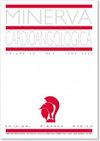Left ventricular concentric remodeling and impaired cardiorespiratory fitness in patients with heart failure and preserved ejection fraction.
Q3 Medicine
引用次数: 1
Abstract
BACKGROUND Left ventricular (LV) concentric remodeling refers to a process by which increased LV relative wall thickness alters myocardial geometry, resulting in reduced LV end-diastolic volume (LVEDV) and stroke volume (SV). While the degree of concentric remodeling is a negative prognostic factor in heart failure with preserved ejection fraction (HFpEF), it is not known how it contributes to cardiorespiratory fitness (CRF). METHODS We performed a retrospective analysis of patients with HFpEF who underwent treadmill single-photon emission computed tomography myocardial perfusion imaging (SPECT-MPI) and cardiopulmonary exercise testing (CPX). From exercise SPECT-MPI, we recorded post-exercise LVEDVi, LVESVi, SVi, LVEF, the presence and extent of perfusion defects, and perfusion reversibility. Peak oxygen consumption (VO2), the oxygen uptake efficiency slope (OUES), oxygen (O2) pulse, ventilatory efficiency (VE/VCO2 slope), ventilatory anaerobic threshold, respiratory exchange ratio, exercise time, and maximum heart rate were obtained from CPX. Data are expressed as mean (±standard deviation). Univariate and multivariate linear regression was performed. RESULTS We identified 23 subjects who had completed both an exercise SPECT-MPI and a CPX. Patients were more commonly women (83%), black (65%), middle-age (50 [±7.3] years), and obese (body mass index [BMI] 39.7 [±6.0] kg/m2). Greater LVEDVi and LVESVi correlated positively with peak VO2 (R=+0.648, p=0.001; R=+0.601, p=0.002), O2 pulse (R=+0.686, p<0.001; R=+0.625, p=0.001) and OUES (R=+0.882, p<0.001; R=+0.779, p<0.001). The LVEF correlated inversely with peak VO2 and OUES (R=-0.450, p=0.031; R=-0.485, p=0.035). Perfusion defect area, grade of severity, and presence of reversibility were not associated with CRF variables. CONCLUSIONS Post-exercise reduced LV volumes correlate with measures of impaired CRF in patients with HFpEF, thus supporting a pathophysiologic role of concentric remodeling in impaired CRF in HFpEF.心力衰竭患者左心室同心重构和心肺功能受损及射血分数保留。
背景左室(LV)同心重构是指左室相对壁厚增加改变心肌几何形状的过程,导致左室舒张末期容积(LVEDV)和卒中容积(SV)降低。虽然同心重构程度是保留射血分数(HFpEF)心力衰竭的一个负面预后因素,但尚不清楚它如何影响心肺健康(CRF)。方法我们对接受跑步机单光子发射计算机断层心肌灌注成像(SPECT-MPI)和心肺运动试验(CPX)的HFpEF患者进行回顾性分析。通过运动SPECT-MPI记录运动后LVEDVi、LVESVi、SVi、LVEF、灌注缺损的存在及程度、灌注可逆性。CPX测得峰值耗氧量(VO2)、摄氧效率斜率(OUES)、氧(O2)脉冲、通气效率(VE/VCO2斜率)、通气无氧阈值、呼吸交换比、运动时间、最大心率。数据以平均值(±标准差)表示。进行单因素和多因素线性回归。结果我们确定了23名完成了SPECT-MPI和CPX练习的受试者。患者多为女性(83%)、黑人(65%)、中年(50[±7.3]岁)和肥胖(体重指数[BMI] 39.7[±6.0]kg/m2)。较大的LVEDVi和LVESVi与峰值VO2呈正相关(R=+0.648, p=0.001);R=+0.601, p=0.002), O2脉搏(R=+0.686, p<0.001;R=+0.625, p=0.001)和OUES (R=+0.882, p<0.001;+ R = 0.779, p < 0.001)。LVEF与峰值VO2和OUES呈负相关(R=-0.450, p=0.031;R = -0.485, p = 0.035)。灌注缺损的面积、严重程度和可逆性与CRF变量无关。结论运动后左室容量减少与HFpEF患者的CRF受损相关,因此支持同心重构在HFpEF患者CRF受损中的病理生理作用。
本文章由计算机程序翻译,如有差异,请以英文原文为准。
求助全文
约1分钟内获得全文
求助全文
来源期刊

Minerva cardioangiologica
CARDIAC & CARDIOVASCULAR SYSTEMS-
CiteScore
1.60
自引率
0.00%
发文量
0
审稿时长
>12 weeks
期刊介绍:
A Journal on Heart and Vascular Diseases.
 求助内容:
求助内容: 应助结果提醒方式:
应助结果提醒方式:


